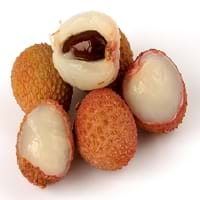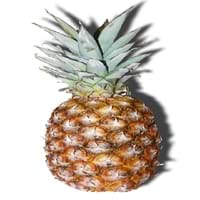Health Benefits
Cancer prevention, Cures gastro-intestinal troubles, Heart care, Muscle pain relief, Prevents blindness from diabetes
Asthma treatment, Bronchitis treatment, Cancer prevention, Heart care, Increases metabolic rate
General Benefits
Boosts immune system, Digestive aid, Fights against infections, Helps in weight loss, Maintains healthy cholesterol level, Strengthens bones
Anti-inflammatory properties, Controls blood pressure, Digestive aid, Eye care, Healing of wounds, Maintains healthy cholesterol level, Strengthens bones, Treatment of sinusitis, Treatment of common cold
Skin Benefits
Anti-aging benefits, Skin rejuvenation
Anti-aging benefits, Brightens and lightens complexion, Skin cleansing, Treatment of acne, Treatment of dark spots
Hair Benefits
Promotes longer and healthier hair, Protects hair
Prevents hair loss
Allergy Symptoms
Coughing, Diarrhea, Headaches, Hives, Itching, Labored Breathing, Nausea, Runny nose, Swelling of mouth, tongue or lips, Vomiting, Watery eyes
Abdominal pains, Itching in tongue and other parts of mouth, Sneezing, Swelling, Tingling sensation in wrist and face, Vomiting, Wheezing
Side Effects
May cause abdominal pain, Diarrhoea, Mouth irritation, Throat irritation, Weight gain
Causes swollen mouth, Allergic reaction, Diarrhoea, Nausea, Skin rash, Vomiting
Best Time to Eat
As a snack in the late afternoon, Don't consume at night and before bed, Eat the fresh ones, avoid mixing with any other foods, don't eat after meal., Morning time (before lunch), Strictly avoid empty stomach
Best if taken as a breakfast (or empty stomach), As a snack in the late afternoon, Eat the fresh ones, avoid mixing with any other foods, don't eat after meal., Morning time (before lunch)
Vitamin B5 (Pantothenic Acid)
Vitamin C (Ascorbic Acid)
Vitamin K (Phyllochinone)
Phytosterol
Not Available
Calories in Fresh Fruit with Peel
Not Available
Not Available
Calories in Fresh Fruit without Peel
Type
Tree fruit, Tropical
Berry, Tropical
Season
Spring, Summer
Autumn
Varieties
Emperor fruit, Mauritiu, Sweet Heart, Brewster, Haak Yip and Bengal
Smooth Cayenne, Abacaxi, Red Spanish and Queen
Color
Bright red, Pink red
Yellow
Inside Color
Greyish-white
Yellow
Taste
Crunchy, Juicy, Sweet
Strong, Sweet, Tart
Origin
China, Indonesia, Philippines, Vietnam
Central America, South America
Grows on
Trees
Not Available
Soil Type
Alluvial, Loam, Well-drained
Clay, Sandy loam, Well-drained
Climatic Conditions
Absence of strong wind, Cold, Dry, Without frosts
Hot, Sunny
Facts about
- The seed of Lychee fruit is toxic & can adversely affect the digestive system.
- This fruit gives a smoky flavor when eaten dried.
- This fruit is a symbol of love and romance in China.
- A single pineapple takes 3 years to reach maturation.
- Pineapple is not an apple, but is actually a berry.
- The name is with reference to its resemblance to pine cones.
- Pineapple is sweeter if scales are more.
Top Producer
China
Costa Rica
Other Countries
Australia, India, South Africa, Thailand, United States of America
Brazil, India, Philippines, Thailand
Top Importer
Hong Kong
United States of America
Top Exporter
China
Costa Rica
Botanical Name
Litchi chinensis
Ananas comosus
Synonym
Nephelium litchi
Ananas sativus
Subkingdom
Tracheobionta
Tracheobionta
Division
Magnoliophyta
Magnoliophyta
Class
Magnoliopsida
Liliopsida
Subclass
Rosidae
Commelinidae
Family
Sapindaceae
Bromeliaceae
Species
L. chinensis
A. comosus
Generic Group
Soapberry
Pineapple
Difference Between Lychee and Pineapple
We might think that Lychee and Pineapple are similar with respect to nutritional value and health benefits. But the nutrient content of both fruits is different. Lychee and Pineapple Facts such as their taste, shape, color, and size are also distinct. The difference between Lychee and Pineapple is explained here.
The amount of calories in 100 gm of fresh Lychee and Pineapple with peel is Not Available and Not Available and the amount of calories without peel is 66.00 kcal and 50.00 kcal respectively. Thus, Lychee and Pineapple belong to Low Calorie Fruits and Low Calorie Fruits category.These fruits might or might not differ with respect to their scientific classification. The order of Lychee and Pineapple is Sapindales and Poales respectively. Lychee belongs to Sapindaceae family and Pineapple belongs to Bromeliaceae family. Lychee belongs to Litchi genus of L. chinensis species and Pineapple belongs to Ananas genus of A. comosus species. Beings plants, both fruits belong to Plantae Kingdom.









